There are thousands of fanboys of French terry fabric as it’s strong, durable, lasts longer, moisture-absorbent, and flexible. I, personally, love the comfort that nothing French terry can provide.
But what is French terry? Well, French terry is a light to mid-weight fabric, it can either be made of 100% cotton or a blend of cotton and spandex, rayon, lycra, polyester, or organic soy. You may use this fabric in both casual and active apparel including sweatshirts, hoodies, pullovers, etc.
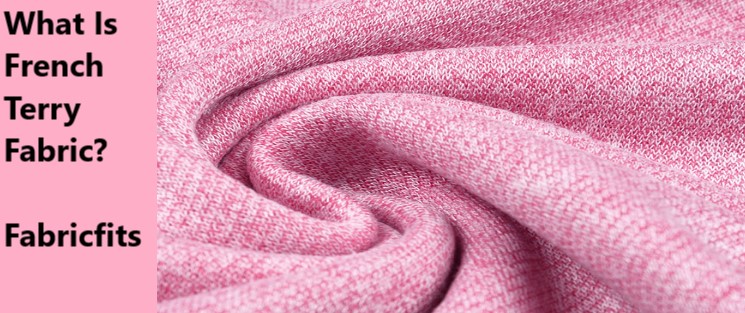
That’s simply the surface-level talks. If you want to know why French terry is different from fleece, how you should care for and maintain French terry, what French terry is used for, and things like these, this article will quench your thirst.
Let’s dive in. Okay?
Table of Contents
- What is French Terry Fabric? What Is It Made Of?
- Characteristics of French Terry Cloth
- Is French Terry Fabric Stretchy?
- Does French Terry Shrink?
- Does the French Terry Pill?
- What Is French Terry Used For?
- Is French Terry Fabric for Summer or Winter?
- French Terry vs Fleece
- French Terry vs Terry Cloth
- How to Care & Clean French Terry Fabric and Clothes?
- Additional Questions
- Final Words
What is French Terry Fabric? What Is It Made Of?
Since terry fabric has been used since the 1980s, the majority of people in the US probably have one piece of clothing made with French terry without even realizing it.
This fabric is almost similar in nature to the jersey as it’s a knit fabric having soft piles on one side and loops on the other side. It’s easiest to recognize the fabric in sweatshirts where it’s soft on the inside and smoother and soft on the outside. And, French terry can either be hand-knitted or machine-knitted.
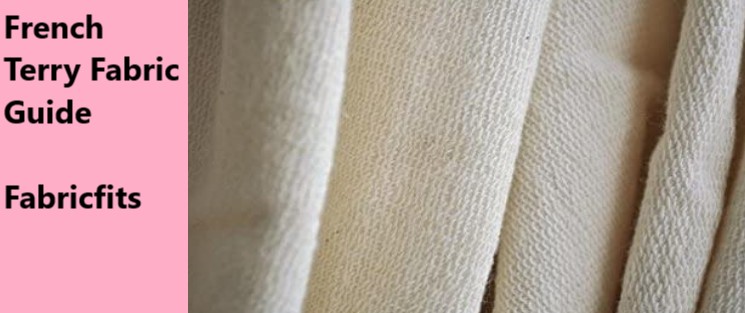
This type of knit being present in the fabric creates comfort, softness, and texture.
As I mentioned earlier, it’s a mid-weight fabric, meaning it’s heavier than cotton used in an average t-shirt but lighter than fabrics you’d find in sweatpants for use in cold weather.
French terry isn’t so moisture-wicking as you see on other fabrics specially designed for exercises but its moisture-wicking level can absorb sweat from your body. Overall, it’s moderately absorbent and very comfortable to wear.
People love to use the fabric mostly because of its versatility. It can keep you warm in cooler weather as well as cool in warmer weather.
Characteristics of French Terry Cloth
As you’re informed, French terry’s out-facing side is flat and smooth. This feature makes it feel and look like a sweatshirt fleece. However, this fabric’s inside loops aren’t brushed into a fuzzy material like fleece. The loops are left untouched, instead.
There are many more differences between French terry and fleece, pin it for later, and we’ll discuss them in detail. Now, let’s see what characteristics make French terry unique.
- Usually, French terry is a very light fabric but it may vary from light to medium.
- The cotton thread of the fabric can absorb around 27 times its weight in water. That’s huge, right?
- The loop side of the fabric wicks moisture super fast. This feature makes French terry most suitable for the summer season.
- It’s a strong and durable fabric that can withstand twisting, tugging, pulling, and rubbing without even causing damage.
- Most French terry fabric comes in weight from 10-15 ounces per yard.
- It’s a low-maintenance fabric that doesn’t wrinkle easily and doesn’t require dry cleaning.
- If your French terry is made of pure cotton, it won’t smell after you remove them from the dryer, as synthetics do smell.
Is French Terry Fabric Stretchy?
The answer is affirmative. This fabric is so much loved for its stretch. For this, people also call it stretchy or jersey terry cloth.
Does French Terry Shrink?
No, although most cotton clothing tends to shrink in low heat, French terry cloth isn’t the same. In fact, it may sound unusual but low heat prevents terry cloth from shrinking and maintains the fluffiness of the fabric as well.
Does the French Terry Pill?
Unfortunately yes, it may pill if you go through lots of wear and multiple washing.
However, you can consider line-drying your garments to solve the issue. Another thing you may not like about French terry is the loops of the fabric may flatten over time.
To avoid these issues as much as possible, you have to care for and clean French terry fabric gently.
There’s a section below that contains the best way to deal with dirty terry fabric, you can scroll down to know about it right this second.
What Is French Terry Used For?
By now, you’ve known what French terry is and what features it offers. Now, you may be wondering when to wear French terry.
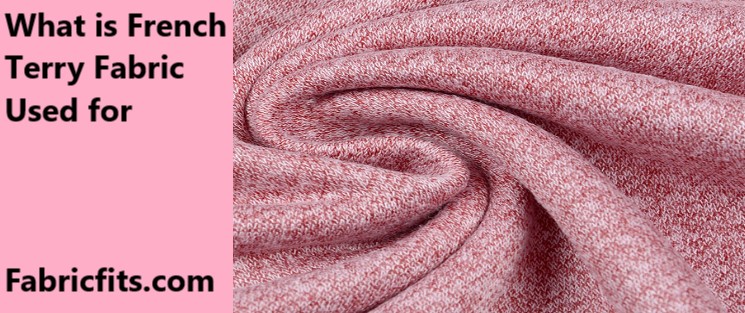
Since the fabric has short and soft piles of yarn on the inside, it’s very cozy and comfy to wear as sweatpants and hoodies. Also, the absorbance, flexibility, and stretch of the fabric make it suitable to wear as jogging suits or sportswear.
Since it provides a superior comfy feel against the skin, people love to wear French terry for lounging as well.
Read Next: What is Calico fabric made of
Is French Terry Fabric for Summer or Winter?
The answer may surprise people who ask about, is french terry too hot for summer.
French terry is a wonderful choice for summer, beach days, or backyard pool hangs because of its absorbency, fluffiness, and quick-drying feature.

But this fabric isn’t a great choice for winter as it’s not warm enough to withstand too low a temperature. Naturally, the lightweight material won’t feel that thick, you know.
So, overall, French terry would be the best option for wearing in the early summer, spring, and early autumn seasons.
Although it’s generally a thicker fabric than other cotton fabrics available on the market it allows for a fair level of breathability. Thus, you can use it when layering in other pieces of clothing.
Yes, for being lighter than a sweatshirt as well as heavier than a t-shirt, you can use French terry under or over other clothes throughout the year.
Read Next: Guide on Chenille Fabric
French Terry vs Fleece
So, what makes French terry and fleece is the way of finishing the materials while manufacturing. What it means is with both fabrics, manufacturers keep the loops on the backside which becomes the inside of the garment when you wear them.
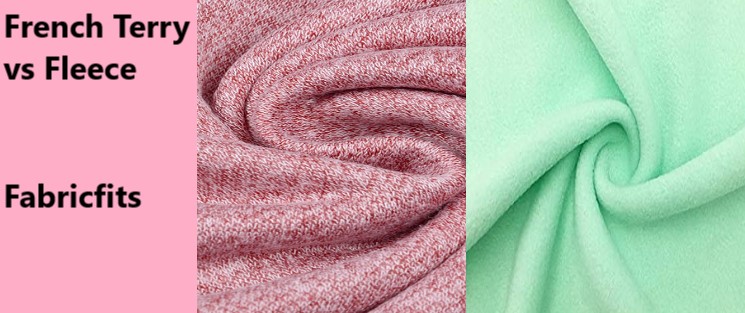
On French terry fabric, they leave the yarn loops intact which makes the fabric more breathable, and moisture-wicking.
But on the fleece, manufacturers cut up and shred the yarn loops and create a soft and fuzzy feel. This makes fleece less breathable and not moisture-wicking, unlike French terry.
Fleece fabrics are mostly used for making sweat shorts. The fabric is almost similar to wool in feel and touch. Although Fleece is a thicker fabric compared to French Terry, the second type absorbs water better.
| Parameter | French Terry | Fleece |
| Thickness | Thinner | Thicker |
| Absorbency | High | Moderate |
| Fabric type | Pure cotton or cotton/polyester blend | Pure polyester or cotton/polyester blend |
| Wicks moisture | Better | Good |
| Body temperature | Keeps body cooler | Keeps body warmer |
As you can see on the table, fleece is usually made of a blend of cotton and polyester or just polyester. The cotton present in the fabric aids wicks and absorbs moisture.
The sizes of fleece yarns are generally from 20 to 40 singles. The term ‘single’ here refers to one cohesive thread. The knit and yarn sizes matter here because they determine the fleece’s weight. The yarn will be finer if there’s a higher single.
And, fine yarn makes a material smooth so the lower numbered ‘singles’ indicate it as a heavier material that is thick and perfect for warmer weather.
Key features of fleece are they’re a great alternative to wool, an earth-friendly option, and super comfortable for warm weather. But fleece attracts hairs, lint, and dust and they’re not wind resistant.
Next Read: All You Need to Know About Sateen Fabric
French Terry vs Terry Cloth
If you’re curious about french terry vs terry cloth, traditional terry cloth can be made from linen, silk, polyester, and other man-made blends. However, they’re generally woven from cotton. Here’s a fun thing, silk was used for the very first terry weave.
And, French terry is just one type of terry cloth. Other types are long loop terry, terry velour, low and zero twist terry, and microfiber terry.
How to Care & Clean French Terry Fabric and Clothes?
The good news is, French terry is very easy to clean and maintain but you must take care of it regularly. The key rule is to be gentle on the fabric. Try not to use any harsh chemicals on your French terry clothes.
Don’t think of using bleach regularly on the fabric because bleach is not only harsh on germs but also harsh on terry fabric.
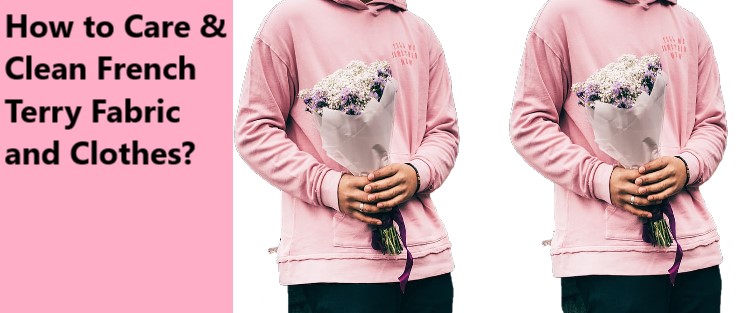
And, if there’s a stubborn stain on your terry cloth, it’s better to pre-treat the fabric before you throw it into the washing machine.
If there’s any soap residue on the fabric from any laundry detergent, the fabric may become stiffer and harder. So, it’s always best practice to use a mild laundry detergent for French terry fabric.
Here are some recommendations for mild laundry detergents you should use for cleaning French terry cloths:
- Eco-friendly detergents
- Baby laundry detergents
- Free and clear detergents
- Delicate wash detergents
To maintain absorbency, avoid using any fabric softeners. Although softeners make fabrics feel extra smooth and soft, they may reduce the water absorbency of French terry fabric with regular use.
However, we’re not saying that you have to totally give up on fabric softeners. These things below will help you minimize fabric softener’s long-term effects on French terry fabric.
- Use fabric softeners only once a month.
- Add one cup of vinegar to the final wash for removing fabric softener build-ups.
- If you want to stick to using softener regularly, try adding one and a half cups of baking soda with every wash. What baking soda does here is to soften the water as well as let the fabric not be tougher.
Other tips you can follow to maintain the quality of French terry fabric.
- While washing French terry cloths, always turn them inside out before you put them into the washing machine. This ‘inside-out technique’ will help protect the front of the cloth from color fading.
- Make sure the wash settings on the washing machine are appropriate. Use a delicate, hand-wash, or gentle cycle to seal the chances of wear and tear of your clothes.
- Try to avoid color contamination because this issue seems even bigger when it’s about French terry fabric. It’s a good practice to pick the cold wash when you wash different colored French terry cloth items to prevent color contamination.
- To prevent shrinkage, you must use low-heat drying settings on a dryer. However, if you dry your clothes outdoors, use the inside-out technique here. It’ll protect the outer part of the cloth from fading or discoloration.
- Make sure you avoid direct heat for maintaining its fluffiness.
Additional Questions
Question: Does French Terry Wrinkle?
Answer: Generally, it does not. But if you somehow notice any wrinkles after washing and drying the fabric, use a steam iron rather than using a dry iron. It should help resolve the issue.
Question: Will French Terry Keep You Warm?
Answer: Yes, French terry keeps you warm but you shouldn’t expect it to protect you from too much chill weather. In this case, a sweatshirt fleece should be your choice.
Question: Is French Terry Clothes Baby-friendly?
Answer: Yes, after the very first wash, French terry is a baby-friendly option.
Question: Do French Terry Cloth Snags?
Answer: It’s rare that French terry clothes snag.
Question: Why is French Terry Fabric Expensive?
Answer: The cotton fiber used to weave the fabric is high-quality and the pricing is worth it.
Final Words
Hopefully, this article rubbed off all of your confusion regarding French terry clothes including what French terry fabric is, what it is made of, how you can clean it, and all.
So, now you’ve got to understand why French terry is one of the most versatile fabrics that can match almost any environment, activity, and weather. It’s always great to wear super comfortable and flexible clothes so you are going to love the fabric no doubt.

Hi, thanks for your article, very thorough. In the 70s I worked at a sewing plant in Winder GA, Carwood Mfg. We made mainly work clothing for JC Penney & Sears, similar to Dickies brand. Most of the town (& South) worked in textile plants & my aunts. I suppose bc of that start I’ve always been interested in fabrics, the detail/stitching. Today’s fabrics are much more varied & confusing to me.
I’m seeing Bamboo as “cotton”. I disagree! It’s for furniture & flooring! And maybe sheets. A very long time ago a teacher said don’t use wood products on your face such as tissues, use (real) cotton only.
I came across this searching for soft breathable, stretch clothing, I’m very hot natured. Some fabrics are like being wrapped in Saran Wrap-like a mobile sauna.
Again, I appreciate your your knowledge. Hope you have a blessed week ahead.
Thanks, Kathy
Georgia